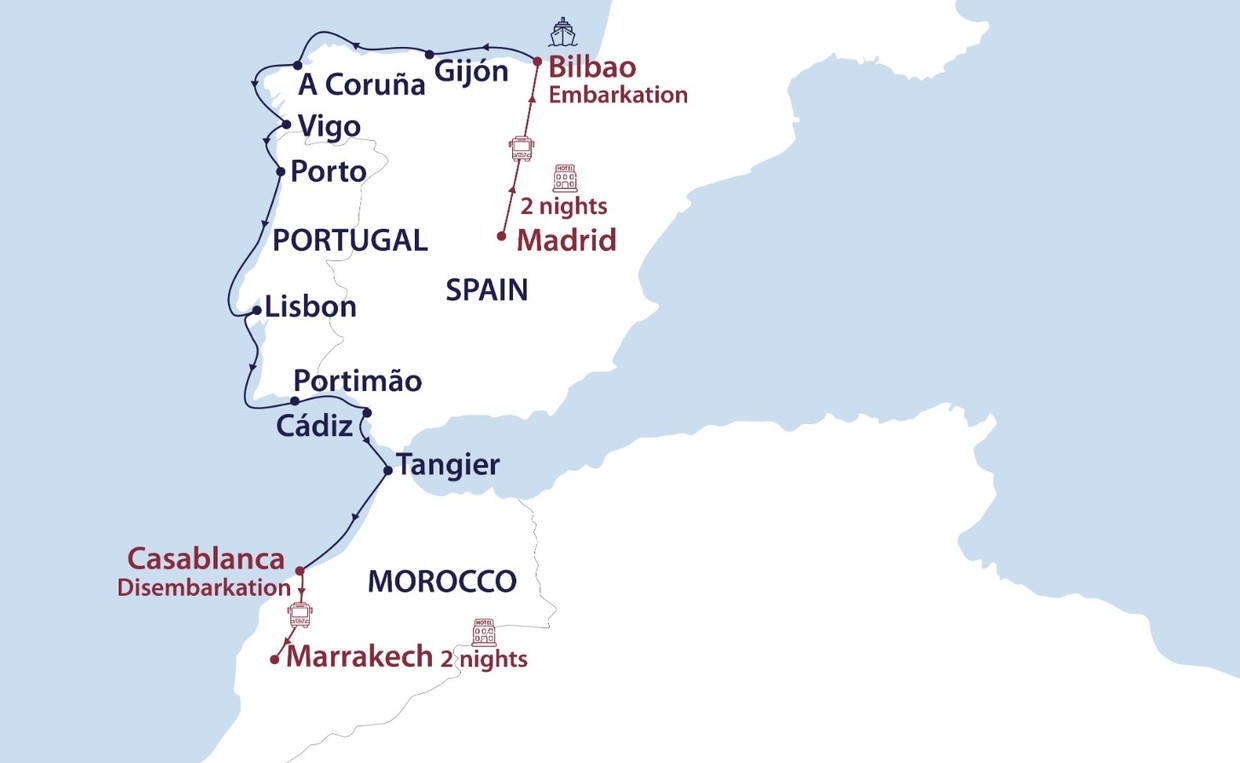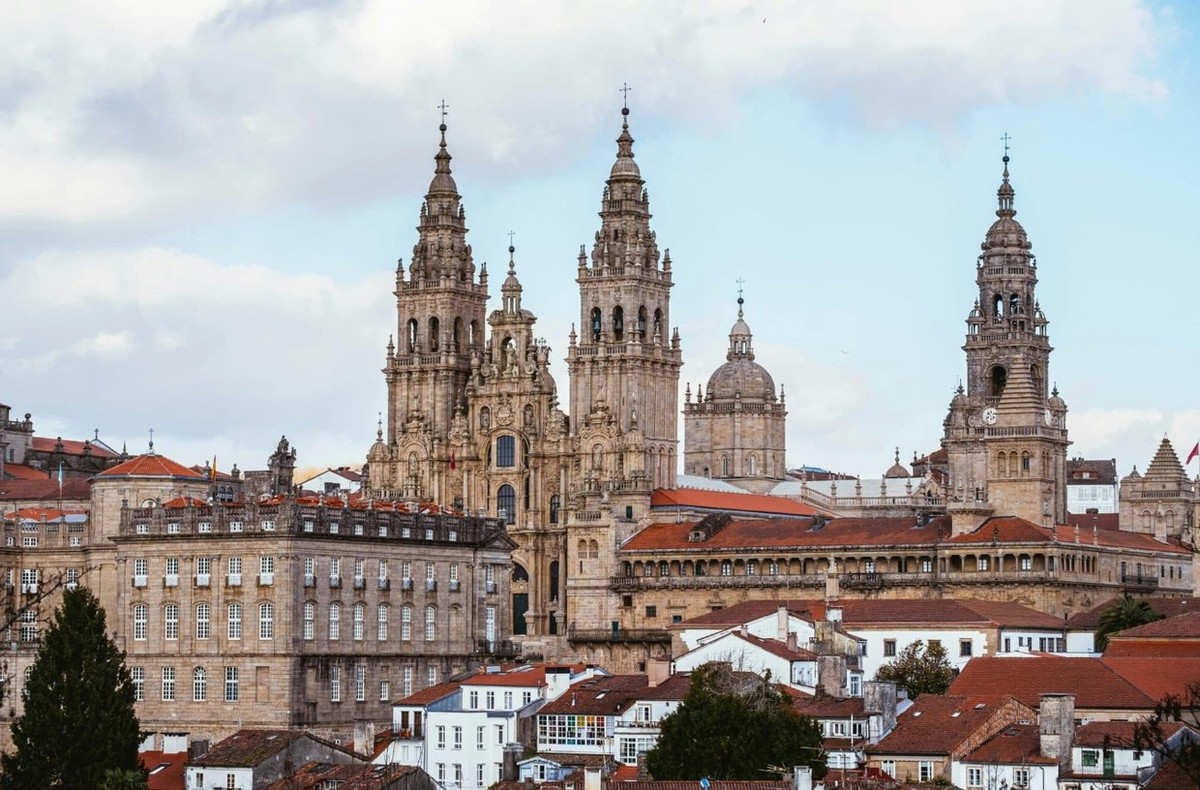
Welcome to Aurora Expeditions’ An Atlantic Adventure
Embark on an exhilarating voyage from the rugged Atlantic Coast of Northern Spain to the exotic shores of Morocco, tracing the historical routes of legendary Spanish and Portuguese explorers and valiant naval commanders. Navigate waters once charted by the likes of Columbus, Vasco da Gama, Sir Francis Drake, and Admiral Nelson, where epic naval battles and daring expeditions shaped global exploration and ignited national pride.
Beginning in Madrid, our journey unfolds along the picturesque Atlantic coastline, where each town brims with iconic Iberian charm, before we pause at the revered pilgrimage site of Santiago de Compostela, meander through nostalgic Porto, and marvel at Lisbon’s monuments. We then call in at Cádiz, where we delve into the harbour’s storied past. Sailing past Cape Trafalgar, we reach Morocco, where we encounter wartime intrigue amid the captivating allure of Tangier, culminating in the vibrant Berber capital of Marrakech. Join us on this epic nautical adventure, where every wave carries the legacy of intrepid seafarers, and every port of call unveils a tale of daring exploration and discovery.
- Follow in the footsteps of the Atlantic’s legendary explorers and naval commanders as we navigate through bays, harbours, and beachfronts rich with maritime history.
- Explore the nautical strongholds of Gijón, Vigo, A Coruña, Lisbon and Cádiz
- Experience the seafaring cultures, and swashbuckling stories along the Atlantic coast from Ferrol to Portimão
- Indulge in the local seafood, wines, ciders, ports and sherry that make this coast a ‘foodies’ bounty
- Hear tales of Tangier’s wartime intrigue and delve into Marrakech’s Berber culture
Prices quoted here are often dependent on currency fluctuations. Please check with (01432 507450 or info@small-cruise-ships.com) for the very latest price, which may well be cheaper than the one advertised here.
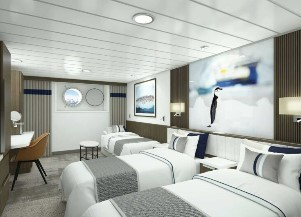
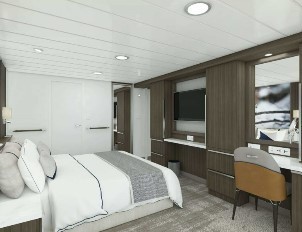
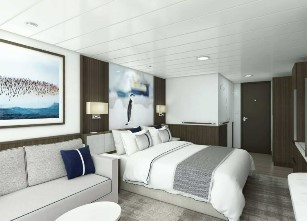
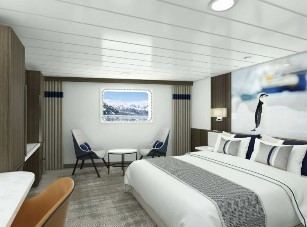
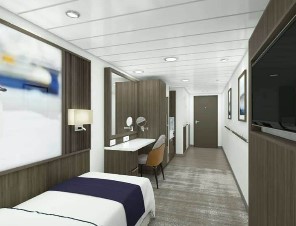

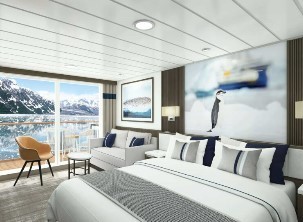
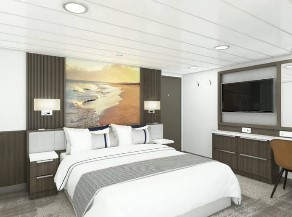

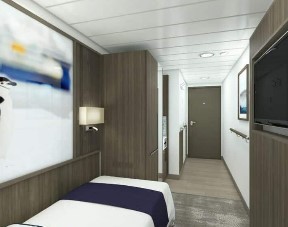
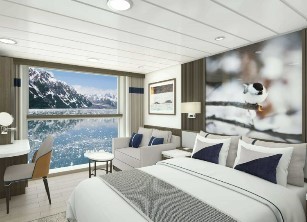
Welcome to Spain. On arrival at Madrid airport make your way to the Arrivals Hall to meet our representative, followed by a transfer to our group hotel. At the hotel, visit our hospitality desk in the lobby to meet our team, who will provide you with useful information regarding pre-embarkation procedures and about your time in Madrid. You will also receive cabin tags for your luggage. Please clearly label the tags with your name and your cabin number on the ship. Your day is at leisure to explore independently, enjoy the hotel facilities or simply relax after your flight.
Accommodation: Melia Madrid (or similar)
Spain’s colourful capital lives up to its reputation, with a vibrant atmosphere and more than just a workaday lifestyle. Cheerful and lively at all hours, Madrid pulses with a distinctive Latino spirit that adds to its dynamic character. This is a city where restaurant shutters don’t rise until most people’s bedtime, and artwork lines the streets.
In addition to its renowned museums and galleries, and life-size statues of famed explorer Christopher Columbus, to a string of handsome kings astride their stallions, Madrid also boasts busy streets filled with all kinds of shops, restaurants offering world-class cuisine, and an unbeatable nightlife. Yet, it also surprises with tranquil historical spots that charm everyone passing by. You will find traditional, family-run, century-old bars where friends gather for a drink; diverse neighbourhoods; and cultural centres offering a traditional type of tourism. Madrid’s authenticity, infused with its unique Latino spirit, is hard to beat.
Our ‘Your Choice’ Experiences showcase the two faces of Madrid, with time this afternoon to continue your exploration of Spain’s capital independently. This evening, we invite you to join us for a Spanish-style Welcome Event as we kick off our Atlantic Adventure.
Personalise your exploration with our included ‘Your Choice’ experiences.
Option 1 – Morning experience: A Royal Morning in Madrid
Our guided tour provides a uniquely local perspective on Spain’s capital. As we explore, you will encounter statues and monuments throughout the city commemorating explorers and naval heroes. The tour uncovers some of the city’s impressive plazas, historical buildings and intriguing stories, culminating in a visit to one of its royal landmarks.
One of the few official residences of heads of state open to the public, the Royal Palace of Madrid, or Patrimonio Nacional, is not only home to King Felipe VI, but it is also the largest palace in Western Europe, spanning more than 135,000 square metres (about half the area of the Vatican) and featuring an incredible 3,418 rooms. The palace, inaugurated in 1819, sits on the site of the old Alcázar of Madrid, a medieval fortress converted into a royal residence. The original Alcázar, decorated with Spanish Golden Age art, was destroyed by fire on Christmas Eve 1734, leading to the construction of the current palace, with its Italian design, opulent rococo and neoclassical interiors, including impressive frescoes by Giambattista Tiepolo and Anton Raphael Mengs. The palace also boasts a Royal Armoury, one of Europe’s finest collections, and the Campo del Moro gardens, designed by Juan de Villanueva, making it the perfect place to conclude our visit of this grand city. Explore the grounds further or return to the hotel for an afternoon at leisure.
Option 2 – Morning experience: A Portrait of Madrid
Our guided tour paints a uniquely local perspective on Spain’s capital. As we explore, you will encounter statues and monuments throughout the city commemorating explorers and naval heroes. The tour introduces us to the city’s popular plazas and grand cultural icons, culminating in a visit to the inspiring Prado.
Closely linked to the Spanish psyche, the Prado is a must-see for art enthusiasts visiting Madrid. Since its inauguration in 1819, the Museo Nacional del Prado has been dedicated to conserving, exhibiting and enriching its collection, which not only reflects Spain’s rich history, but also displays many of the world’s most renowned works of art. With over 1,000 paintings spanning four centuries, the museum can be overwhelming for first-time visitors. Our guide will take us to key works and share the captivating stories behind them, including masterpieces by Bosch, El Greco, Velázquez, Goya, and Rubens. Choose to linger longer at the Prado or return to our hotel, with your afternoon free to explore the city independently.
Accommodation: Melia Madrid (or similar)
Meals: Breakfast, Welcome Event canapés
We hit the road for a morning’s drive to the coast, making a memorable stop in the ancient city of Burgos.
Here, we discover one of Spain’s most striking churches and most memorable character. The Burgos Cathedral, a UNESCO World Heritage Site, rises majestically, with its Gothic spires making a bold statement on the city skyline. Burgos Cathedral is also home to the final resting place of one of Spain’s most beloved heroes: Rodrigo Díaz de Vivar, better known as El Çid. Born in the nearby village of Vivar, El Çid was a legendary knight who fought for both Christian and Muslim causes. He earned the Arabic honorific as-Sayyid, which would evolve into El Çid, accompanied by the Spanish honorific El Campeador.
We continue to the port of Bilbao to board the Douglas Mawson and sail south towards Gijón. This evening, we enjoy a ‘Welcome aboard’ dinner when we meet our Aurora Expeditions team and crew.
Meals: Breakfast, Dinner Onboard
Once a Roman port known as Gigia, Gijón’s maritime legacy dates back centuries, with remnants of ancient docks and Roman baths still visible today. Its strategic coastal location has shaped its identity as a bustling port city, a heritage celebrated through its maritime museum, which houses artefacts and exhibits detailing the city’s seafaring past. Gijón also served as a crucial point of departure for pilgrims on the Camino de Santiago, a medieval pilgrimage route to Santiago de Compostela in northwestern Spain, drawing travellers from across Europe. Local explorers and adventurers, inspired by Gijón’s seafaring traditions, have embarked on voyages that shaped global exploration. Notably, the city was a significant hub for Asturian emigrants who left for the Americas in the 19th and early 20th centuries, contributing to its international ties.
Today, Gijón’s waterfront promenades, bustling marina, and events such as the Semana Negra literary festival continue to celebrate its maritime heritage and cultural significance.
Personalise your exploration with our included ‘Your Choice’ experiences.
Option 1 – Morning experience: Asturia’s Capital – Oviedo
A half-hour drive south of Gijón brings us to Oviedo, the current capital of the Asturias region. This historical city has been crucial in preserving Christianity in the Iberian Peninsula since the 9th century. During this time, Oviedo became a hub of pre-Romanesque architecture, showcasing a distinctive style that influenced religious buildings throughout Spain. But Oviedo’s significance goes beyond its architecture; it was also the seat of the early Asturian Kingdom and remained an important religious and cultural centre throughout the Middle Ages.
Our local guide will lead a walking tour of Oviedo’s downtown core, highlighting the stunning San Salvador Gothic Cathedral and the restored Old Town. After the tour, you will have time to explore this picturesque city on your own. With its rich historical heritage and modern charm, Oviedo is a favourite destination for visitors to the Asturian coast.
Option 2 – Morning experience: Gijón’s Favourite Brew
The coastal towns of Asturias’ cider region are brimming with cider houses, beloved by locals and visitors alike. Gijón’s cider houses, called sidrerías, are found all over the city, but the best ones are on the edge of Cimavilla (the old town), where you can enjoy the show of a waiter pouring your drink while listening to the rumbling of the Atlantic Ocean crashing below. Naturally, a visit to a cider farm is a must. Just half an hour from Gijón, this experience is an authentic Galician experience. The trees are full of fruit, creating a picturesque setting for a leisurely stroll. Here, cider is more than just a drink; it’s a central part of the local culture. Festivals celebrate its significance, and there’s a strong emphasis on sustainability in brewing practices. During your visit, you will sample a variety of traditionally crafted ciders and learn the unique pouring technique that enhances its flavour. This traditional craftsmanship, combined with the deep-rooted cider culture and commitment to sustainability, ensures a fun and immersive experience.
Spain’s ‘secret garden’ is the verdant region of Galicia. This less-visited section of the country is a true gem, away from the tourist crowds and beloved by Spanish visitors. Locals still speak Galician, and the blond, blue-eyed inhabitants proudly hold onto their Celtic heritage. Bring your umbrella, as it may rain, but it’s all worth it. This region is a lush, green enclave amid Spain’s dry and arid interior.
The coastal city of A Coruña is steeped in maritime heritage, celebrated through its iconic Tower of Hercules, the only working Roman lighthouse and a UNESCO World Heritage Site. As one of Spain’s major port cities, A Coruña has been a hub of maritime trade and exploration since ancient times, with various naval battles played out off its shores. Its strategic location on the Atlantic coast has made it a pivotal point for voyages across the seas, including journeys to the Americas during the Age of Exploration, when A Coruña served as a departure point for explorers such as Pedro Menéndez de Avilés, who founded St Augustine, the oldest continuously inhabited European-established settlement in the continental United States.
Today, A Coruña continues to embrace its maritime past, while evolving as a modern city with vibrant cultural festivals. Its picturesque waterfront invites both locals and visitors to stroll, enjoy local wines, indulge in abundant Atlantic seafood, and soak in the charm of this historical coastal city.
Join a tour to the city’s popular brewery, walk a section of the pilgrimage trail or hear tales of maritime champions, before we set sail early evening for our second Galician port of call at Vigo.
Personalise your exploration with our included ‘Your Choice’ experiences.
Option 1 – Morning experience: A Coruña and Galicia’s Favourite Beer
Experience the vibrant flavours and heritage of A Coruña on this engaging morning excursion. Begin with a drive along Europe’s longest coastal promenade, soaking in the historical charm of the city, including the Castle of San Antón and the ancient UNESCO World Heritage Site of the Tower of Hercules. The tower has served as a lighthouse and landmark at the entrance of La Coruña harbour since the late 1st century BCE. Having seen the major sights of the city our journey shifts focus to a local favourite: Estrella Galicia. For over a century, this iconic brew has been the beer of choice for Galicians. The MEGA Museum and Estrella Galicia Beer Factory, a city landmark since 1906, host our guided brewery tour where you’ll learn about the brewing process and delve into the brewery’s storied past. Then, indulge in a tasting session where you can sample a variety of Estrella Galicia beers, roll your own brew, and savour a selection of five different brews.
Option 2 – Morning experience: Ferrol – A Maritime Champion
Across the bay from A Coruña, we visit Ferrol, a town steeped in maritime history. A city hardened by a thousand battles, Ferrol is a wise mixture of urban elegance, and former military power, seeking a resurgence in popularity as the starting point of the ‘English Way’ portion of the pilgrimage to Santiago de Compostela. Stroll through the neighbourhood of Barrio da Magdalena, declared a Historic-Artistic Site, known for its rationalist layout from the Enlightenment era, and the origins of the typical gallery-fronted Galician houses. Visit the Mirador de los Jardines de Herrera to admire the Church of San Francisco, the Palace of the Navy Captaincy, and the Military Arsenal.
Our morning includes a visit to the shipbuilding museum in Ferrol, offering a deep dive into the town’s rich naval heritage. Housed in a historic building, you’ll learn about the shipyards that have been central to Ferrol’s economy and defence. Interactive displays and multimedia presentations bring to life the stories of the ships built in Ferrol and the people who constructed them. A visit to this naval town offers us a chance to embrace its maritime past, which is such an integral part of the communities in this region.
Option 3 – Full-day experience: Santiago de Compostela – Walking the Pilgrimage Trail
Today we join the trail to Santiago de Compostela, Europe’s most significant pilgrimage city. Once a major site during the Spanish Reconquista, Santiago was heavily damaged by Moorish invaders in the 10th century, igniting Christian Iberia’s passion and spurring a resurgence centred on the city’s fervour for St James. Today, its Old Town, with its blend of Romanesque, Gothic, and baroque architecture, is renowned as the endpoint of the 790-kilometre Camino Francés pilgrimage route. The Camino de Santiago has long been a spiritual journey, offering pilgrims a chance to seek personal transformation, fulfil vows, or find purpose through devotion, self-discovery, or adventure.
Our scenic drive takes us to Sigüeiro, where we become pilgrims ourselves for a while, walking a few kilometres along the historic trail. Having stretched our legs and contemplated our path, we continue to Santiago de Compostela where we embark on a guided walking tour, passing landmarks like the Town Hall, the Pazo de Raxoi (‘the Pazo’), and the Palace of Saint Jerome, as you make your way to Obradoiro Square. A highlight of your visit will be the 12th century Cathedral of Santiago de Compostela. Admire its stunning façade, showcasing a mix of architectural styles, and step through the Holy Door to explore the captivating history of St James and the city’s belief that his bones lie within its walls. (Note this tour involves walking on uneven surfaces and through forested areas, requiring a good level of fitness and balance.)
As one of Spain’s leading fishing ports, Vigo’s bustling harbour is a testament to centuries of seafaring tradition. The city’s history is also intertwined with the Camino de Santiago, with pilgrims traditionally arriving by sea before embarking on their journey to Santiago de Compostela. Visitors can enjoy the scenic waterfront, savouring fresh seafood at local restaurants, or explore the historical shipyards that echo with tales of old. With its lively festivals, lengthy beaches, and welcoming atmosphere, Vigo provides a glimpse into Galicia’s coastal heritage.
Personalise your exploration with our included ‘Your Choice’ experiences.
Option 1 – Morning experience: Santiago de Compostela
A one-hour drive takes us to Santiago de Compostela, Europe's most renowned pilgrimage city. Once a pivotal site during the Spanish Reconquista, Santiago faced significant damage from Moorish invaders in the 10th century. This destruction fuelled a renewed Christian fervour across Iberia, centred around the city's veneration of St. James. Today, Santiago's Old Town, with its blend of Romanesque, Gothic, and Baroque architecture, is celebrated as the final destination of the 495-mile Camino Francés pilgrimage route. For centuries, the Camino de Santiago has offered a profound spiritual journey, allowing pilgrims to seek personal transformation, fulfill vows, or discover a sense of purpose. People undertake this pilgrimage for various reasons, including religious devotion, self-discovery, or the thrill of adventure.
Upon arrival, embark on a guided walking tour, passing notable landmarks such as the Town Hall, the Pazo de Raxoi (‘the Pazo’), and the Palace of Saint Jerome as you head toward Obradoiro Square. The tour’s highlight is the Cathedral of Santiago de Compostela, dating back to 1122. Take in its diverse architectural styles and enter through the Holy Door to explore the intriguing history of St. James and the belief that his remains are housed within the cathedral.
Option 2 – Morning experience: The Roman Enclave of Lugo
The unique city of Lugo offers a captivating glimpse into the past with its perfectly intact, UNESCO-listed Roman walls, heralded as the most complete and best-preserved example of Roman military architecture in the Western Roman Empire. Constructed in the late 3rd century to defend the Roman town of Lucus, these fortifications stretch over a mile and rise more than 7 metres high. With 71 of the original 85 towers and 10 entrance gates still standing, Lugo’s walls are a testament to Roman engineering. But Lugo is not just an old city; it also boasts impressive graffiti, murals and modern artworks. A must-see is the image of Julius Caesar by graffiti artist Diego As. This piece, a nod to the city’s Roman history, is especially impressive when viewed from the city wall and in 2022, it even won an award for best mural in the world. Declared the oldest city in Galicia, Lugo offers travellers a city with a medieval heart, but a modern-day twist, making it an intriguing story and an even more fascinating place to visit.
Option 3 – Morning experience: Soutomaior Castle and Winery Visit
Travelling inland, we arrive at Soutomaior, famed for its imposing fortress originally constructed in the 12th century and extensively rebuilt in the 15th century by Pedro Madruga. Known for his brutal rule and involvement in local conflicts, Madruga’s renovations reflect his formidable and controversial legacy. Enter through the operational drawbridge and explore this meticulously preserved castle, surrounded by award-winning gardens and ancient chestnut trees. Following our castle visit, we head to a local winery, where we tour the vineyards and delve into traditional winemaking methods. Guided by the vintner, experience a tasting of wines made from albariño grapes, distinguished by their citrus, floral and almond notes.
Portugal’s second-largest city, Porto entices visitors with its storied past, vibrant culture and architectural splendour. It was in Porto that the Portuguese ‘Age of Discovery’ began, when the indomitable Prince Henry the Navigator set sail to the western coast of Africa in the early 15th century. Porto has never looked back.
The city lends its name to the fortified wine produced in nearby valleys, framing the Douro River with picturesque streets, iconic iron bridges, and renowned wine cellars. In the UNESCO World Heritage-listed ‘old town’ of Ribeira, a colourful blend of Romanesque, gothic and baroque architecture adds to the lively atmosphere, while Porto’s historical Rabelo boats, once vital for transporting port wine barrels, grace the riverbanks. This blend of tradition and modernity makes Porto an unforgettable destination, captivating visitors with its timeless charm and dynamic spirit.
Choose from two popular ‘Your Choice’ experiences this morning. Return to the ship for lunch or stay in town to explore the city independently with our sailing set for late afternoon.
We berth today at the port of Leixões, located around nine kilometres from Porto centre. A shuttle bus will be provided this afternoon, which can be pre-booked with our concierge onboard.
Personalise your exploration with our included ‘Your Choice’ experiences.
Option 1 – Morning experience: The Port of Porto
Visiting a port cave in Vila Nova de Gaia, across the Douro River from Porto, is a quintessential experience when visiting Porto. Here, the famous port wine produced in the Douro Valley is aged and stored in what the Portuguese call ‘caves’. As you wander through the narrow streets it is easy to realise you are in the heart of port wine country. The process of making port involves fortifying wine with a grape spirit, stopping fermentation early to retain natural sweetness. This creates a rich, flavourful wine that’s perfect for both sipping and pairing with a variety of dishes.
On a port cave tour, you learn about the different types of port, including ruby, tawny, white and vintage. Each type has specific rules governing its production and ageing. For instance, ruby port is aged for a shorter time in large barrels, preserving its fruity character, while tawny port ages longer in smaller barrels, developing complex, nutty flavours. Of course, our guided tour includes tastings, giving you a chance to savour the unique qualities of each port. The cool, dimly lit cellars provide an atmospheric backdrop as you explore the history and craftsmanship behind this iconic Portuguese wine.
Option 2 – Morning experience: Porto’s Ribeira District and Traditional Rabelo Boat Cruise
Explore the heart of Porto as we join a locally guided tour through the historical Ribeira district, a UNESCO World Heritage Site renowned for its architectural significance. Ribeira’s vibrant cobblestone streets and colourful facades tell the story of a district that thrived in the 18th century as a key player in global trade. It was here that merchants handled a range of goods, from spices and textiles to the prized port wine, shaping Porto’s economic landscape, resulting in grand merchant houses and public buildings funded by the city’s newfound wealth. From here we take a scenic boat cruise along the Douro River aboard a traditional Rabelo boat, navigating and gliding beneath the city’s six iconic bridges, including the stunning Dom Luís I Bridge designed by Gustave Eiffel, and take in panoramic views of Porto’s riverside residences. This journey offers a unique perspective of Porto’s bustling waterfront, making for an unforgettable exploration of this historical city.
We set sail in the wake of explorers and adventurers, heading south to Portugal’s capital. A day at sea offers a chance to enjoy the ship’s amenities at your leisure. Attend a presentation by our resident storyteller, gather tips on capturing the perfect photograph from our onboard photographer, or simply unwind with a refreshing drink and a good book – perhaps a tale about Christopher Columbus?
Lisbon sits on the river Tagus, gifting it access to the coast that made Portugal one of world’s most successful trading nations. Explorers including Vasco da Gama, Magellan and Bartholomeu Dias sailed on behalf of their monarch, discovering new lands and establishing new trade routes. The city prospered, with much of the proceeds from their colonies spent on opulent architecture. On the morning of All Saints Day 1755, Lisbon’s faithful were huddled in church when a 7.7 magnitude earthquake struck, followed by a series of tsunamis that devastated the city. Candles lit for the religious ceremonies began a firestorm. By the end of the day, more than 75 per cent of the population had perished. Current day Lisbon reflects this tragedy, with few buildings pre-dating the 18th century, but money spent to rebuild the city was spent doggedly, creating a city of wide boulevards, sensible facades and parklands, all backed by opulent baroque interiors and paved by unique black and white-tiled pavements. With a relatively small population, Lisbon is an easy city to navigate. Its hillside suburbs are accessed by trams and funiculars while its waterfront remains a busy harbour, ready to continue the trading prowess that made the city famous.
Personalise your exploration with our included ‘Your Choice’ experiences.
Option 1 – Morning experience: Highlights of Lisbon
Join a locally guided tour of Lisbon for a morning stacked full of highlights. The city’s story unfolds as we visit the suburb of Belém, with its Monastery of Jerónimos to hear more of Vasco da Gamas’ adventures; the waterfront memorial of Monumento das Descobrimentos, honouring Prince Henry the Navigator and his fellow explorers; and the Torre de Belém – the 16th century fortification which acted as the gateway to Lisbon for all seafarers. This insightful tour tells tales of exploration, colonisation and devastation wrapped together by the history of a city whose influence has shaped much of our modern-day world.
Near the famed Cais do Sodre train station, the beautiful building of the Mercado da Ribeira sits topped with a Moorish-style dome. To end our tour, we visit this famous market and its popular ‘Time Out’ food complex. Lisbon’s populace has shopped for fresh fruit, vegetables, fish and meat here since 1882, with the market’s latest offerings including 30 ‘pop-ups’ offering petiscos (Portuguese tapas) and traditional products such as cheeses, cured hams, smoked sausages, fish conserves, wines and more. Our local guide introduces us to a variety of Portuguese specialties, such as Pastéis de Nata – the Portuguese custard tart that is a national specialty. Choose to return to the ship for lunch or extend your time exploring the markets, where you can sample a variety of Portuguese specialties (own expense).
Option 2 – Morning experience: Lisbon’s Maritime Heritage
Join a locally guided tour of Lisbon with a maritime twist. The city’s story unfolds as we visit the suburb of Belém, with its Monastery of Jerónimos, to hear more of Vasco da Gama’s adventures; the waterfront memorial of Monumento das Descobrimentos, honouring Prince Henry the Navigator and his fellow explorers; and the Torre de Belém – the 16th-century fortification that acted as the gateway to Lisbon for all seafarers.
A highlight of our tour is a visit to the Museu de Marinha. Our visit affords us an engaging view of Lisbon’s maritime focus, from military and commercial vessels to fishing and leisure. While it features artefacts from various periods, including Roman times, the museum’s central focus is on Portugal’s golden Age of Discovery. We will be captivated by a diverse collection, including life-size models of ships and original vessels from Portugal’s era of exploration and colonial expansion. With exhibits including paintings, navigation charts, and historical instruments, the museum brings Portugal’s maritime legacy to life in a hands-on and immersive way. We return to the ship for lunch, with time to enjoy the city this afternoon before we sail late –afternoon.
Sailing south, we encounter the famed Algarve, where the coastline is adorned with beach resorts, charming seaside towns, and endless stretches of golden-sand beaches.
Set on the estuary of the Rio Arade, Portimão was a flourishing fishing village until only 30 years ago. Greeks, Phoenicians and Carthaginians all plied their trade but in the 11th century the Moors arrived, and Burj Munt as it became known, never looked back. A gateway to the fortified town of Silves and neighbour to a coast of classic, caved beaches, Portimão fishes for a different catch these days, with its marina home to a flotilla of gently bobbing yachts, and riverfront promenade host to casual cafes and bars.
Our options today allow to indulge your creative side with a visit to medieval Silves’ artisan workshops, exercise your legs on a clifftop walk followed by a winery picnic or visit the southwestern-most point of mainland Europe.
Personalise your exploration with our included ‘Your Choice’ experiences.
Option 1 – Morning experience: Silves Castle and Portuguese Pottery Workshop
The former Algarve capital of Silves hosts us this morning with a locally guided tour and pottery workshop. Showcasing a unique blend of heritage, culture and imagination, emphasised by will and passion, Portuguese ceramics are famous worldwide. We enjoy time with a local ceramicist, who welcomes us to their studio. They share the art of modelling clay pieces into works of art and demonstrate how to make various pieces by using the potter’s wheel and hand-working clay. Returning to town, we tour the 11th-century red sandstone Castelo de Silves, whose square turrets and impenetrable ramparts loom over the town from an immense orange grove. This impressive castle once formed part of the wall that encircled the city and was an important defence as the residence of the Moorish kings of the Al-Garb. Steeped in history, the castle has a 60-metre-deep well and a set of vaulted cisterns that still supplies the town with water. We return to the ship for lunch, with plenty of time this afternoon to self-explore Portimão.
Option 2 – Morning experience: Cabo de São Vicente and Fortaleza de Sagres
Our journey today takes us to two of Portugal’s most dramatic maritime sites. Our first stop is the southwestern-most point of mainland Europe, Cabo de São Vicente. This rocky outcrop features towering cliffs, and a lighthouse built in 1846, still operational today. The original tower, constructed in 1515, served as a guide for sailors with its occasional bonfires, until Sir Francis Drake destroyed it in 1587.
Next, we visit the cliffside Fortaleza de Sagres, reputedly built by Henry the Navigator. This National Monument of Portugal has withstood repeated attacks and the 1755 Lisbon earthquake. The fortress features original architecture, and a massive, mysterious compass rose made from pebbles. Stroll around the promontory, where information boards share the region’s story, and anglers balance on cliffs, hoping to land a fish.
In Lagos, time permitting, we explore the town’s tiled boulevards and whitewashed villas, including the former slave market from 1444. This site, like others in Portugal, reflects a sombre chapter in history that profoundly impacted the region. We approach this visit with respect for its historical significance and the legacy it represents, before returning to the ship for lunch.
Option 3 – Full-day experience: Caminho dos Promontórios Clifftop Walk with a Winery Picnic Lunch
The municipality of Lagos’s coastline is characterised by the jagged and laced appearance of a continuous line of cliffs. Their abrupt nature mesmerises those who watch the ocean from their viewpoint. The Caminho dos Promontórios, or ‘Path of the Headlands’ Walk follows the coastline for six kilometres, between Praia do Molhe, near the mouth of the Arade River, and Praia do Paraíso, near the village of Carvoeiro. From the Ponta do Altar headland to the east, a succession of small headlands alternate with recessed beaches and coves resulting from ancient landslides, making this region of the Algarve unique. We follow the clifftop path to learn the geology, lithology and geomorphology, marine ecosystems and coastal vegetation that makes this coastline so scenic. Having worked up a thirst, we drive inland to a traditional Algarve winery. The demarcated region of the Algarve produces red, white, rosé and liqueur wines. The white and red wines are characterised by their ripe, fruity aromas and warm, velvety taste. We enjoy a handcrafted picnic lunch among the vines with a variety of local products to taste, along with wines from the producer, of course.
The proud city of Cádiz sits at the mouth of the Guadalquivir River. As the gateway to the Mediterranean, it is touted as the oldest continuously inhabited settlement in Europe, with its dominant families claiming ancestry dating back to Roman times, when the city was called Ceret, and the wine produced was Vinum Ceretensis. From Phoenicians to Iberians, Romans to Moors, Cádiz had its fair share of invaders. It is no wonder its skyline is dotted with 120 watchtowers, including the 150-foot-tall Torre Tavira, used for spotting sails as they appeared on the horizon – often the first sign of the return of long-lost explorers. A Spanish naval base even today, it was off the coast of Cádiz at Cape Trafalgar where the British won the battle of the same name over Napoleon’s fleet, with the loss of Horatio Nelson. It was from Cádiz where Christopher Columbus set sail to discover the ‘new world’. And it was in Cádiz harbour where Sir Francis Drake sacked and burned so many ships that he delayed Spain’s attempt at invading England’s by at least a year and changed the course of world history.
Personalise your exploration with our included ‘Your Choice’ experiences.
Option 1 – Morning experience: The Captains of Cádiz
The port city of Cádiz has long been the stage for seafaring legends whose destinies were shaped by its ship-lined shores. Christopher Columbus, driven by the audacity of his patrons, embarked from this very port on voyages that would redefine the world. Centuries later, Sir Francis Drake, the relentless privateer, unleashed fire, and fury upon Cádiz, delaying the Spanish Armada and leaving the city smouldering in his wake. Then came Admiral Nelson, whose disciplined daring secured victory near Cádiz, though at the cost of his life. The legacies of these men, and those who sailed with them, are now woven into the very fabric of Cádiz. As the waves lap against its ancient docks, they carry the echoes of those who once navigated these waters. It is a story that fills our morning in Cádiz.
Option 2 – Morning experience: Arcos de la Frontera
We journey inland to the hills of Andalusia. The whitewashed town of Arcos de la Frontera was an important border post, dating from the time when this land was the ‘frontier’ between the Muslim territories and the encroaching Catholic lands. Hemmed in on three sides by the Guadalete River, Arcos is one of the most beautiful of the Pueblos Blancos, which are traditionally painted white to ward off the summer’s intense heat. Expelled by King Alfonso X in 1250, the Moors fled south, and the city became a Christian stronghold dominated by a Gothic cathedral that sits perched on the town’s highest ridge. Famed for its ten bells, which tolled throughout the war with the Moors, the cathedral displays several Moorish banners taken in the battle of Zahara as loot. Returning to the ship for lunch, there is time this afternoon for you to explore Cádiz independently.
Option 3 – Full-day experience: Walking the Heart of Seville
One hour north of Cádiz lies Andalusia’s famed city of Seville. Our local guide tells a tale of Seville supported by a host of history’s famed conquerors, stories of the ‘new world’ and a clash of cultures should read as famous as the buildings we visit. Built in the 14th century as a Mudejar style palace, The Alcázar is the oldest European monarchal residence still in use. Moorish influences join forces with tokens of Gothic, Renaissance, and baroque style added by later Christian kings, all with harmonious charm. Islam and Christianity vied for power in this city, with the might of Christianity being victorious by building Europe’s third largest cathedral right over the top of a 12th century mosque. The largest Gothic structure in the world, the cathedral houses many famous souls. In 1899, 400 years after his death, the renowned explorer, Christopher Columbus, finally found an eternal place to rest, in Seville Cathedral. Towering over the cathedral is Seville’s crowning glory – UNESCO World Heritage listed Giralda tower, which was inspired by Marrakech’s Katoubia mosque. Christian overlords allowed this Islamic minaret to remain albeit as the cathedral’s bell tower. Its top storey heralds a Renaissance motif, that was added in the 16th century, affording travellers one of the greatest cityscapes throughout Spain.
Our stroll of Seville continues through the Barrio Santa Cruz, Seville’s once-thriving Jewish quarter. This maze of alleyways is full of plazas, tile-covered patios, and whitewashed houses draped in flowers, leading us to Plaza de España, Seville’s spectacular central square – the perfect end to a delightful amble through Seville. Our tour fills our morning, with time for independent exploration before returning to the ship mid-afternoon. (A boxed lunch will be offered by the ship as to maximise your time in Seville).
Few countries seem to captivate the imagination of travellers quite like Morocco. Situated in North Africa and separated from Spain by the Strait of Gibraltar, Morocco is an intoxicating blend of African, Arab, Moorish and Berber influences. With coasts on both the Atlantic Ocean and the Mediterranean Sea, an arid desert interior and the evocatively named Atlas Mountains nearby, Morocco’s location beckons travellers with promises of adventure. In the 1960s and 1970s, Morocco became a refuge for writers, musicians, artists and ‘bohemian types’ from abroad, looking for inspiration and escape in equal measure. It is no wonder that every year more than 10 million tourists around the globe choose it as their top destination.
We arrive this morning at a city located at the crossroads of Africa and Europe; Tangier. Unique amongst Moroccan cities, Tangier has a chequered past, affording us one of Europe’s most egocentric stories. Designated an ‘International Zone’ in the early 20th century, Tangier harboured no drug laws, no taxes, no banking restrictions, no censorship laws and no morality laws. Attracting a worldly mix of expat residents, it played house to everyone from eccentric British nobility to American authors, Franco’s civil war army to Nazi spies, while it awaited its inclusion in the post-war nation of Morocco. Stories of elicit affairs, underworld deals, and espionage abound in this city which remains as colourful as its history suggests.
Personalise your exploration with our included ‘Your Choice’ experiences.
Option 1 – Morning experience: Tangier Kasbah district, Kasbah Museum and American Legation Museum
We begin our journey at Tangier’s fabled Kasbah. Largely unchanged since Roman times, the Kasbah was the traditional residence of the Sultan and his harem and is now one of the most fashionable residential areas of Tangier. During a guided stroll we discover the Grand Socco. This café filled plaza serves as the gateway to Tangier´s medina and was once the haunt of Paul Bowles, William Burroughs and their Beatnik friends who gathered here to discuss life and literature while mingling among double agents and expats during the notorious time of international rule. Our next stop is at the American Legation. The first American public property outside the United States, the American Legation is now a museum that traces the history of the two countries relationship. As one of the first countries to recognize America’s independence, Morocco permitted the new United States government to establish a legation in Tangier in 1821. It is the only historical monument to have remained in American possession since the birth of the American nation. Amongst several displays here is a letter from George Washington to the Sultan - Moulay Abdellah. Returning to the ship for lunch, our afternoon is free in Tangier to explore further, search for souvenirs at its souk, or simply relax onboard.
Option 2 – Full-day experience: The Artisan Enclave of Tétouan
Little more than an hour’s drive east of Tangier lies the coastal enclave of Tétouan. This authentic whitewashed town sits at the foot of the Rif Mountains. Once the capital of the Spanish protectorate of Morocco Tétouan blends Arabic and Spanish culture and architecture. Our morning is spent exploring the UNESCO World Heritage listed medina. We walk the meandering lanes of the souk, discover the Jewish and Spanish quarters and visit the Bab Akla School of Traditional Arts and Crafts, where we observe masters instructing apprentices in 10 ancient crafts gifting us an insight into how the Kingdom keeps its ancient traditions alive. Tétouan’s numerous artisan schools have produced some of Morocco’s best painters over the past half century. They proudly encourage traditional art forms which may otherwise be lost to the modern world. Lunch is taken at a local Riad before we return to the ship.
As we set sail in the late afternoon, we savour a Farewell dinner, with the Moroccan coastline shimmering on the horizon.
We sail south to Morocco’s economic powerhouse, Casablanca. As a bustling 21st-century port city, Casablanca’s role in Morocco’s success is bolstered by its numerous light-industry businesses. After breakfast, we disembark the Douglas Mawson and embark on a three-hour journey to the legendary city of Marrakech. There, we will meet our enthusiastic Moroccan guides, whose deep-rooted passion for their homeland is truly infectious.
On arrival we enjoy a taste of Morocco as we lunch at the popular Ksar El Hamra restaurant, before joining our guides to explore the city’s main attractions, including the Almohad wonders of the Koutoubia Mosque, the geometric zellij (mosaics) and intricate cedarwood of the former Koranic school Ben Youssef Medersa. Our walking tour arrives at one of Marrakech’s oldest surviving buildings – the mausoleum of Almoravid Koubba. We discover bustling souks, walk through a maze of laneways and covered markets bursting with energy, and stop by the Spice Square, where everything from herbs, spices, snakeskins and chameleons have been sold for centuries. No day in Marrakech is complete without a visit to fabled Djemâa el Fna. We immerse ourselves in the captivating energy of this mythical square, one of the world’s great spectacles, where for centuries locals have gathered to watch storytellers, magicians and performers.
This evening is yours to enjoy at your leisure. Our hotel features two excellent restaurants, perfect for a relaxing dinner in. Alternatively, explore Marrakech’s vibrant dining scene and discover a range of restaurants that promise to delight your taste buds, or return to Djemâa el Fna after dark when the city’s residents come out to celebrate the end of their day.
Accommodation: Movenpick Marrakech (or similar)
Meals: Breakfast, Lunch
Waking to our first adhan, the Islamic call to prayer, the muezzin’s emotive call conjures visions of magic carpets and spice-scented medinas. Located at the foothills of the Atlas Mountains, Marrakech is an eclectic mix of centuries-old architectural styles. The fabled ochre city was founded over 1,000 years ago during the Almoravid dynasty, and still beats to an age-old rhythm. Famed for its outstanding artisanship, the city has boomed as one of Africa’s key hubs for contemporary art, architecture and design. Choose from a selection of ‘Your Choice’ experiences this morning, with your afternoon free to relax poolside, or explore the city further independently. Join us this evening for a Farewell event ‘Moroccan style’.
Personalise your exploration with our included ‘Your Choice’ experiences.
Option 1 – Morning experience: Yves Saint Laurent and the Majorelle Gardens
At the Berber Museum, the story of North Africa’s oldest civilisation – the Berber – offers an insight into the roots of the Moorish Empire. The private collection of Yves Saint Laurent and his companion, Pierre Berge, this museum is the centrepiece of the Majorelle Gardens. Saint Laurent, on whom Morocco had a profound influence, bought a house nine days after arriving in Marrakech and held residences here until his passing. According to the man himself, it was in Morocco he discovered the colourful palettes he would use in his creative work. We stop by the memorial in the rose garden, marking the spot where the ashes of Saint Laurent were scattered, before visiting the nearby Yves Saint Laurent Museum, which is dedicated to the work of the master couturier and houses displays of thousands of pieces of clothing, haute couture accessories and sketches.
Option 2 – Morning experience: Art and Artisan Tour of the Marrakech Medina
This guided tour is a feast for the senses as we further explore the delights of the Marrakech medina. We start our visit at the palatial building of dar Si Said Museum. We discover traditional Berber culture, giving us an insight into everyday life in the Morocco of the past. Another highlight is the Orientalist Museum, set in the heart of the medina of Marrakech. Located in a magnificent 17th-century riad, and opposite the Saadian Al Ousta Mosque, we retrace the history of Morocco through artisanal heritage and in particular, the works of orientalist painters who crisscrossed the country in search of exoticism, discoveries and travel.
Option 3 – Morning experience: The art of Moroccan cooking
The famed cuisine of Morocco is in our hands as our culinary skills are put to the test. Discover the secrets of Moroccan gastronomy in a hands-on cooking class in the refined surrounds of the Museum of Moroccan Culinary Art. Built in the 18th century, this remarkable, ancient mud-brick mansion, reminiscent of a sultan’s palace, echoes of Moorish architectural design. From various spices to signature dishes, start your tour with a deep immersion into Moroccan culinary arts before jumping into the kitchen to learn from expert chefs how to make delicious salads and a mouth-watering tagine. We savour the fruits of our labour with an impromptu meal and hone new skills to recreate the authentic flavours of Morocco.
Accommodation: Movenpick Marrakech (or similar)
Meals: Breakfast, Farewell Event dinner
After breakfast, check-out of your hotel and transfer to the airport for your onward flight.
Meals: Breakfast
In the spirit of 21st century travel, we encourage you to adopt a flexible and adventurous attitude when joining our voyages. This itinerary is a guide only and is subject to change due to weather, sea state, government rules, and other conditions beyond our control.
Most walks on this tour are easy to moderate, complemented by coach rides to key sights. However, many venues lack lifts due to preservation rules, and we’ll explore busy locations with narrow cobbled streets, ancient roads, and uneven steps, therefore this voyage is not suitable for passengers with walking difficulties or wheelchairs.
Douglas Mawson
Vessel Type: Small Ship Expedition
Passenger Capacity: 154
Lenght: 104.4 m
Built: 2025
Designed for global discovery
Adventure has a new name. Setting sail in 2025, our new state-of-the-art ship, the Douglas Mawson, is the last in a line of purpose-built vessels that have redefined small ship expedition cruising.
Named after the legendary Australian geologist and explorer, our new small ship embodies Mawson’s pioneering spirit and is designed for global discovery. Featuring the revolutionary Ulstein X-BOW® and purpose-built with enhanced sustainability features, it takes on average 154 adventurers to the world’s wildest places in smooth, quiet comfort. It boasts our most extensive range of cabins yet, including a range of single cabins.
The Douglas Mawson features a host of amenities to help you connect with like-minded travellers and elevate your time onboard our floating base camp for adventure. After a long day of exploring, head to the back deck to swim in the heated outdoor swimming pool, find a sun bed to read on, or soak in one of two Jacuzzis. Work up a sweat in the gym before unwinding in the sauna, resolve to learn something new in the Citizen Science Centre, then enjoy a delicious meal with new and old friends in one of two restaurants. Or, with multiple observation areas throughout the ship, simply relax in comfort while you keep watch for wildlife or incredible landscapes unfold before you.
While enjoying the luxurious amenities onboard, you can rest assured that our aim to get you off the ship to explore the natural environment as much as possible through our unique activities program remains unchanged.
Newest Ulstein X-BOW®
The Douglas Mawson features the newest streamlined Ulstein X-BOW®, designed for global discovery. The revolutionary design cuts through the swell, offering unrivalled stability on ocean crossings and helping to reduce fuel consumption. It’s just one of the many sustainability features that helps us travel more responsibly.
Heated Pool, Jacuzzis & Sauna
In between landings, enjoy access to the onboard gym or unwind in the sauna. Or head to the back deck to swim in the heated outdoor pool, enjoy a drink at the pool bar, or soak in one of two Jacuzzis, watching the world go by.
Leading Technology
The Douglas Mawson is at the cutting edge of nautical technology, fitted with industry-leading technology including world-class return-to-port equipment. The ship also features a medical clinic designed for use in remote areas.
Built for Adventure
The Douglas Mawson features Zodiac access points and an activities platform, making boarding the Zodiacs as quick, efficient and safe as possible, minimising wait times and getting you closer to the action for longer. In our mudroom you will have access to lockers to store gear & boots and rapid drying areas for clothing.
More Cabin Choices
The Douglas Mawson features 11 different types of cabins, including a range of spacious single berth cabins – all adorned with elegant Nordic interior design features.
Multiple Observation Areas
As you explore the ship you will find indoor lounge areas with floor-to ceiling windows, and multiple open decks with expansive 270-360 degree views. The Glass Atrium Lounge inside the bow is a fantastic place to sit and watch for wildlife – with a drink in hand. There is no shortage of spaces to take in the majesty of the incredible world outside!
Lecture Theatre
On all expeditions you will meet naturalists and local specialists, who offer presentations on their area of expertise to enhance your appreciation of the destination you are exploring.
Join the team in the lecture theatre for presentations covering a broad range of topics to suit every interest, from history and culture to biology and climate change. Regardless of the topic, they all have one thing in common: they all aim to engage, educate, entertain and turn you into an ambassador for the planet.
Citizen Science Center & Lounge
Learn more about the world and the unique destinations Aurora visits by visiting the onboard naturalist and Expedition Team in the world-class Citizen Science Center. You will be rewarded for your thirst for knowledge with one of the best views on the ship.
Library
With floor-to-ceiling windows, the library is a peaceful sanctuary where you can find non-fiction books to read up on the day’s destinations, use a public laptop to organise your photos or play board games with newfound friends.
Choose from our range of informative non-fiction titles, wildlife guidebooks, travel journals, novels and a selection of children’s books and board games.
Wildlife guides, books and binoculars can also be found on the observation lounge on Deck 7.
Mudroom
No need to take your wet expedition gear back to your cabin to dry. Keep your cabin warm and cosy by leaving your outer jackets and pants in the mudroom.
The mudroom is your launchpad for all shore excursions and activities. Here, you will have access to a locker when you can hang your gear up to dry, and store your boots between excursions.
Swimming Pool & Jacuzzis
There are two Jacuzzis on the top outside deck which offer amazing views of the world outside, a heated outdoor pool surrounded by sun beds you can relax on after a long day of exploring, and a pool bar.
Gym & Sauna
During your voyage, enjoy complimentary access to the gym or visit our sauna, which we highly recommend after the Polar Plunge!
Restaurants
One of the most important parts of any expedition is the food! Whatever adventures the day holds, you will be fuelled-up with hearty meals and delicious morning/afternoon teas cooked by our onboard chefs.
Meals are a great time to soak up the expedition camaraderie in our open seating dining area. Share stories with your fellow travellers and ask our expedition team questions that may have come up during the day.
Tea, coffee and snacks are available 24 hours a day, and our chefs offer different menu options and courses for each meal. Enjoy the range of house wine, beers and soft drinks included with dinner after a long day in the wild.
We also invite you to join your captain and expedition team for informal Captain’s Farewell drinks, with complimentary beverages and cocktail appetisers, followed by a 3 course meal.
Bars & Lounges
Communal meeting areas have always played a major role in fostering the warm camaraderie on board our ships. They are the heart of the expedition, where people meet to share tales from the day, swap photos, keep an eye out for wildlife and watch the sun go down.
The bars and lounges on board are refined yet inviting places to gather, with floor-to-ceiling windows offering stunning views, and of course friendly bartenders to shoot the breeze with.







